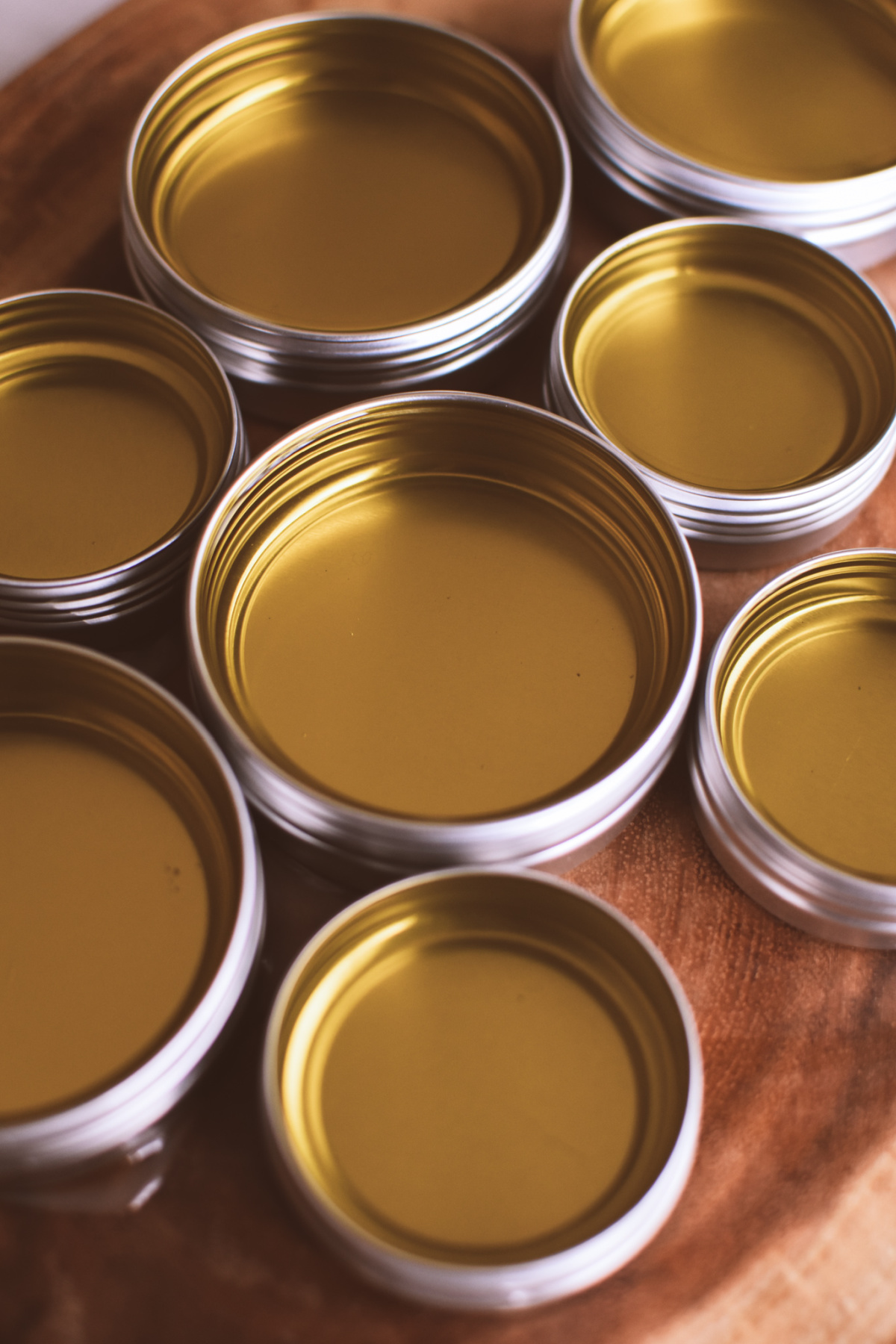
DIY Foraged Chickweed Salve
Chickweed (Stellaria media) is one of the most common medicinal lawn weeds in North America. It enjoys cool temperatures, so it is typically one of the first weeds to arrive in early spring. This common weed has many herbal benefits; it has traditionally been used to soothe skin issues, which makes it a great ingredient in a salve formula. Making a foraged chickweed salve is a low-cost, sustainable option for any herbalist.

Foraging for Chickweed
Foraging for chickweed is quite simple. It is an abundant herb that hugs the ground. Due to its affinity for cool temperatures, it can be found in backyards, open fields, and forests. It can also commonly be found in large clusters. You can find some chickweed identification information in this chickweed pesto blog post.
It requires a gentle tug to pull it out of the ground. For the purposes of making this chickweed salve, a quart and a half of chickweed will need to be harvested.
Once the chickweed is located and harvested, it will need to be rinsed off if particularly dirty or dusty. Use room temperature water under the faucet for a few seconds. After it is rinsed, the chickweed will need to be patted dry.

Drying the Chickweed
Chickweed has a high water content, so before it is ready to be infused in oil, it will need to dry out for 5-7 days. It can be dried using an herb drying rack. Some herbalists also bundle their herbs with twine, then hang them from wall coat racks to dry them out. Once the chickweed has dried, it will significantly reduce in volume.
DIY Chickweed Salve

Infused Chickweed Oil
Once dried out, your harvested chickweed can then be infused in a carrier oil. It is so important to thoroughly dry out the chickweed because if it still contains a high water content, it can be disadvantageous to make an infused oil using the folk method for infused oils. The infused oil will have a higher chance of going rancid if the chickweed is fresh. Some herbalists use the stovetop method to infuse fresh chickweed in oil, but this recipe opts for dry chickweed.
Before making a salve, you will first need to infuse the dried chickweed in a carrier oil. ¾ of a pint of dried chickweed (Stellaria media)Chickweed Infused Oil
1 cup avocado oil
1 cup sunflower oil
1-pint mason jar
cheesecloth
strainer with handle
a bowl or glass measuring cup
The above method of infusing an oil is known as the folk method. It does not require measurements by weight. Once the oil has infused and been strained, it can now be used to make a chickweed salve.

DIY Chickweed Salve
Foraged Chickweed Salve The ratio used for this salve recipe is about a 1:5 ratio. One part will consist of the beeswax and 5 parts will consist of the infused oil. If you do not want to make 12 ounces of salve, you can reduce the amounts of beeswax and oil, but make sure it stays at a 1:5 ratio.
1.5 cups of infused chickweed oilChickweed Salve
5 tablespoons of beeswax
double boiler pot
cooking pot
12 ounces of salve containers (e.g., four 2 oz containers and 4 1 oz containers)
You can use your chickweed salve immediately after it has cooled. Chickweed salve also makes a thoughtful gift! Give the extras to friends or save them for later use. Salves will last up to 2 years depending on the conditions they are stored under. For optimal shelf life, store at room temperature and keep the containers closed.
Chickweed Salve Uses
A foraged chickweed salve is a gentle, all-purpose salve that can be used for soothing skin ailments. Many herbalists use a chickweed salve for itchy skin, eczema, rashes, minor cuts, dry hands, and cracked hands (de la Foret, 2019). Chickweed is a gentle herb and is safe for children to use, as well (Codekas, 2021). Children are always getting cuts from playing outside and this salve is perfect for soothing their “boo boos.” It is one of those salves that is great to keep in a diaper bag or in your purse at all times because everyone can use it. This chickweed salve makes a great all-purpose salve for the entire family.

In Closing,
There are no known contraindications for a foraged chickweed salve, but it is always safest to test it out on your skin. If you notice any skin reactions, discontinue use.
Enjoy your time foraging chickweed and creating this gentle, all-purpose, chickweed salve.

REFERENCES
Codekas, C. (2021, February 11). Chickweed Foraging: Identification, Look-alikes, and Uses. Grow Forage Cook Ferment. https://www.growforagecookferment.com/foraging-for-chickweed/
de la Foret, R. (2019, February 1). Recipes for an annual wild edible chickweed salve & chickweed pesto: Let this star-shaped plant shine by using its invigorating properties in a potent healing salve and nutrient-rich wild greens pesto. Free Online Library. https://www.thefreelibrary.com/Recipes+for+an+Annual+Wild+Edible+Chickweed+Salve+%26+Chickweed+Pesto%3a…-a0571514958








